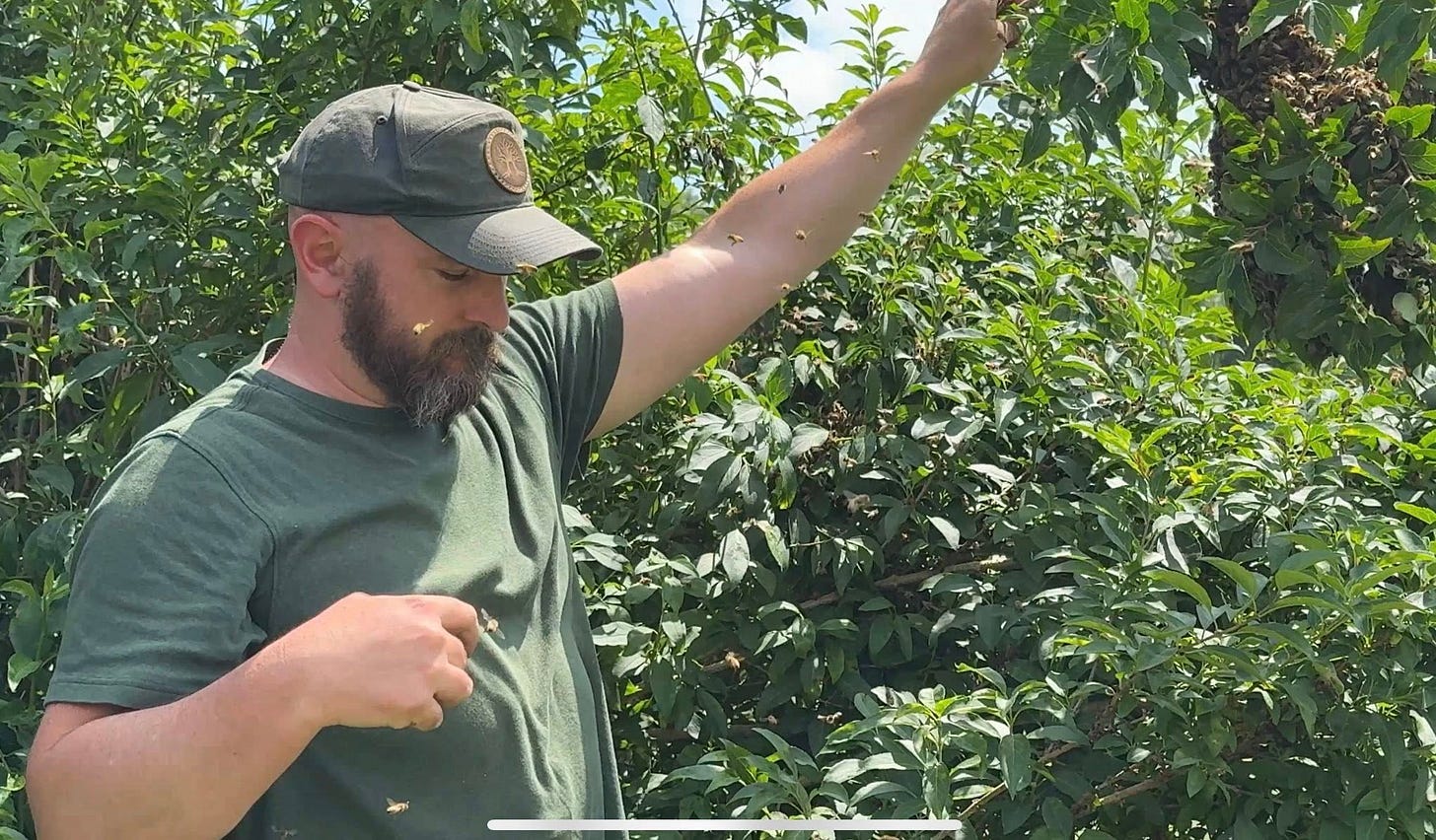We think we are so clever. We simulate the wild, natural world in a beehive, we provide space for those bees to store food and lay brood. We give them everything they need to thrive, to build, to stay.
Sometimes, however, instinct is just too strong.
When a colony of bees in the wild grows large and robust, the queen’s swarm instinct triggers; she decides it is time to leave with half her hive (quite the entourage!) while leaving the other half behind to mind something very special: queen cells. Large eggs that will hatch into the next generation of royalty.
My family and I enjoyed a nice morning out yesterday. The kind of muggy July day after it rains where you can cut the air with a knife and all your thoughts turn to the lake. When we returned home for lunch however, my wife remarked as we drove by our hives, “Oh wow, the bees are really active today!” Yes, they were too active.
They were leaving.
The massive cloud of bees over the apiary was caused by an event called swarming. This is when—for whatever reason—a queen decides that her home no longer suits her and her colony as described above. I was perplexed. Last I checked, my bees had plenty of stored food and plenty of space to lay brood. When this happens, all a beekeeper can do is scratch his head and watch the swarm of bees, hoping to spot where they will go.
Luckily, that was easy for me this time. As I identified which of our twelve hives was experiencing the most activity, I kept my eye on the cloud and watched as it drifted rapidly toward our forsythia bush. There, it coalesced around the queen on a mercifully low branch.
When you find a swarm of bees like this, whether it is one from your hive or one in the wild, it is remarkably easy to capture it as my grandfather explains in this video at the 12:00 minute mark. First off, the queen does not fly often if at all, so her muscles are atrophied. This means she can not fly very far. If you know one of your hives has swarmed, it is extremely likely that queen and her entourage will light somewhere very close by. They will not stay there long, however, so you must act fast. You can brush the bees into a new hive, a nucleus box, or even just a cardboard box if you don’t have a spare hive handy. If you’re lucky like me though and they alight upon a cuttable branch, you can actually just gently clip that branch and place it directly into the new hive, transport box, etc. and give it a gentle shake. This is exactly what I did here:
With the swarm captured, I was no longer on a timer and could take a breath. In the video above, I said it was time to go figure out what was wrong with the hive. As my grandfather said however: “I can manage them to stop 90% of their swarming…but that urge will overtake them and do swarm in spite of all I can do.” Sure enough, there was nothing wrong with the hive. She had plenty of food and space for brood. It was just instinct. She even left behind a strong collection of swarm cells, eggs that were ready to hatch into new queens to lead her abandoned hive.
It was time to rehome this wayward queen. This is where I made a critical mistake.
Keep reading with a 7-day free trial
Subscribe to Echoes from an Old Hollow Tree to keep reading this post and get 7 days of free access to the full post archives.




